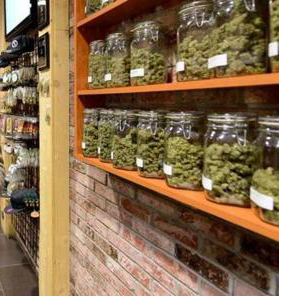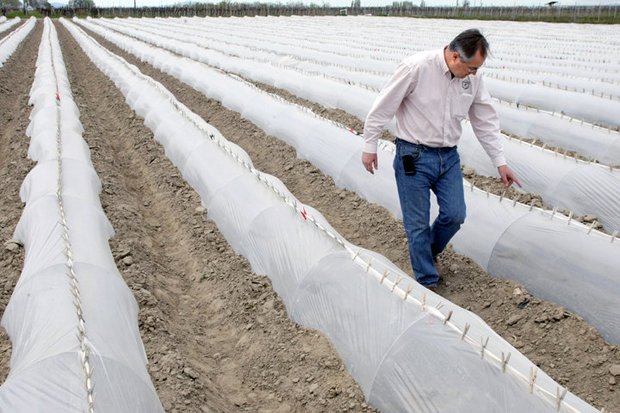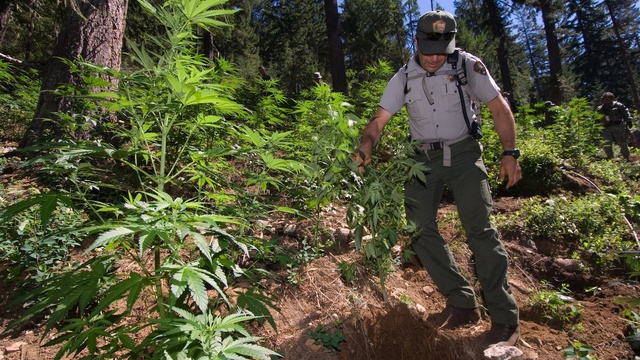Many parents who once viewed marijuana as a hard-core drug now see it as a natural, healing plant.
By Katie Rucke, Mint Press
For two months straight — 24 hours a day, seven days a week — Jason David’s 5-year-old son Jayden screamed in agony. Unable to sleep, defecate or eat, Jayden was taking 22 anti-seizure pills a day, some of which had withdrawal syndromes that are reportedly worse than heroin. David was concerned the pills were literally killing his son.
At his wits’ end and unconvinced doctors were doing everything they could, David says he contemplated suicide because he couldn’t watch his son live in pain any longer. But the devout Christian says God intervened and suggested he try giving his son marijuana.

Jayden David. (Photo/Jason David/Facebook page: “Jason and Jayden’s Journey”)
Jayden is one of an estimated 334,000 people around the world who have Dravet syndrome, a rare and severe form of epilepsy that begins in infancy and left him unable to communicate with his father or his doctors.
Living about an hour from Oakland, Calif., David says Jayden’s doctor agreed they had nothing to lose and gave him a prescription for medical marijuana. David worked with a local medical marijuana dispensary to obtain an oil known as cannabidiol that his son would be able to swallow, not smoke.
Jayden’s medication contains such a low amount of THC, the main psychoactive ingredient found in marijuana, that it’s nearly impossible for him to get high.
The first day Jayden tried cannabidiol was the first day he went seizure-free in 4 1/2 years. Since then, David has continued to give Jayden the medication daily. Though Jayden is not completely seizure-free, David says his son has dramatically fewer seizures and his life is “100 times better.”
David says his son finally has a chance to just be a kid.
“Before, Jayden couldn’t go into a swimming pool,” he said, explaining that his seizures were triggered by excitement, reflective objects, hot and cold temperatures. But not only can Jayden go swimming now, he can get in the car by himself, climb on the playground, go up on the slide, and chew his food.
“Up until he was 5 years old everything had to be pureed,” David said. Jayden is also able to walk “a hundred times better,” he said.
‘Miraculous marijuana’
Jayden was 4 months old when he had his first seizure and was rushed by ambulance to a nearby hospital. The seizures continued for the next six months, and David grew suspicious they were somehow connected to the shots Jayden had recently received.

Jayden shown taking CBD meds, a derivative of marijuana. (Photo /Jason David/Facebook page: “Jason and Jayden’s Journey”)
David says he told his pediatrician he didn’t want Jayden to be given any more shots, but his ex-wife gave the doctor permission. The couple is now divorced.
“She turned me into the bad guy,” he said. But as soon as the needle penetrated Jayden’s skin, he began having a seizure that lasted for 90 minutes and resulted in another ambulance ride.
Before taking cannabidiol, Jayden was taking 22 different anti-seizure medications. Even so, he had at least one seizure per day in addition to about 500 daily twitching seizures.
Jayden now has to take only two other medications. He takes far fewer ambulance rides, and the last one was taken because his body went into withdrawal shock after doctors weaned him off a drug too quickly.
David says many people have changed their opinion regarding marijuana since he shared his son’s story. He says those who once viewed marijuana as a hard-core drug now see it as a natural, healing plant.
Success with marijuana
Though pediatric medical marijuana patients are not as common as adult patients, marijuana appears to have significant healing benefits for kids, too. The drug’s healing properties are not just for kids with Dravet syndrome, either — marijuana is being used to treat all sorts of medical conditions from cancer to autism to attention deficit hyperactivity disorder. Even though marijuana is banned under federal law, the National Organization for the Reform of Marijuana Laws says a majority of scientific studies on the plant back up the miraculous claims made by the parents of pediatric medical marijuana patients.
It’s not just the U.S. that has found a medicinal value for marijuana. Although pot is banned in the Czech Republic — a nation with one of the highest usage rates of the drug — researchers in the European nation have examined the drug’s therapeutic uses since 1954. In fact, it was a Czech citizen, professor Jan Kabelik, who created the world’s first cannabis laboratory, and two other Czech researchers were the first to isolate cannabinoids in the plant.
But these doctors’ findings have not been enough to convince many American physicians to research the drug themselves or prescribe marijuana to their patients.
While the American Academy of Pediatrics does not endorse the use of medical marijuana, the organization’s stance on the drug is reportedly the way it is because some doctors are concerned the use of marijuana may have “devastating consequences” later in life.
“We have doctors contacting parents from different universities doing studies about how the kids are doing,” David said, adding it doesn’t make sense that the U.S. is able to create bombs that kill a million people at once, but doctors can’t figure out a plant.
Legalization advocacy groups often point out that unlike many pharmaceuticals, marijuana is not toxic and has never been reported as the cause of a lethal overdose.
Dr. Stuart Gitlow, the president of the American Society of Addiction Medicine and a member of the American Medical Association Council on Science and Public Health, says doctors are reluctant to recommend medical marijuana to a child because it may come back to haunt them. If the child later develops a mental health condition or gets in a car crash, the doctors will be blamed and won’t have any way to defend themselves, he said.
But several pediatricians in the United States believe the drug has a healing power that is worth investigating.
Because the medical community remains relatively mum on marijuana’s healing properties, it’s parents like David who, by sharing their success stories, have convinced other parents like Rebecca Brown to try it. Brown is investigating whether medical marijuana could help her son, Cooper.
“As soon as I found out about [medical marijuana for Dravet syndrome] I called Jason David that day,” she said, adding that she cried while watching David share his story on the Discovery Channel program “Weed Wars.”
“I was really curious about it,” she said.

Cooper Brown with his dog Lou, July 2013. (Photo /Rebecca Brown)
Officially diagnosed with Dravet syndrome about a year ago, 15-year-old Cooper had his first seizure when he was 5 months old. Brown says over the years Cooper has tried “just about every epilepsy drug at least once,” and at one point was on 27 different medications.
But as Cooper began going through puberty and dealing with fluctuating hormones, Brown says his medicines weren’t working and Cooper went from being “very controlled to out of control.”
Once Cooper’s doctors agreed to prescribe him marijuana, Brown was able to connect with a grower in Michigan who would be able to provide cannabidiol. Brown says Cooper has become his “happy old self” again since he began using medical marijuana about a year ago.
“Before this all started we were basically prisoners in our home,” she said, explaining that their home was generally free from triggers that would result in Cooper having a seizure. Brown says Cooper now not only has fewer seizures, but he is happier, sleeps better, and using cannabidiol “has given him opportunities that had been taken away.”
Pediatric medical marijuana laws
Though Jayden and Cooper qualify for the use of medical marijuana since they live in states that have legalized the substance, children in other states are unable to try the therapeutic drug even though they have the same medical condition.
Luella Johnson is one of those children. The 3 1/2-year-old began having seizures when she was 9 1/2 months old. After months of seizures, Luella was eventually diagnosed with Dravet syndrome.
Though Luella’s father, Jim Johnson, says she has a mild case of Dravet syndrome and does better than 90 to 95 percent of other children with the medical condition, he says her case is still pretty severe. Johnson says that on average, Luella has a seizure every five days.
“Luella has tried and failed several epilepsy medications and even changed her diet,” Johnson says, but nothing seems to work for kids with Dravet syndrome as well as marijuana.
“When it comes to my daughter, I’m pro-anything to help her,” he said.
“If you’ve seen my little princess go through one seizure,” you would support allowing her to try using marijuana for treatment, Johnson says.
Marijuana has been legalized for medicinal purposes in 19 states, with legislation pending in at least five other states. David says medical marijuana needs to be legal in all 50 states so other children can benefit from its use.

Luella Johnson. (Photo/Jim Johnson)
Minnesota, where Luella lives, is one state where medical marijuana legislation is still under debate. Unlike New Jersey, which made it difficult for children to obtain medical marijuana, the proposal circulating in Minnesota intentionally allows children to qualify for the program, said Heather Azzi, political director for Minnesotans for Compassionate Care, a medical marijuana advocacy group.
“Children suffer from the same illnesses as adults,” she said, adding that they need to be protected, too.
David shared the tragic story of 2-year-old Nolan, a child with Dravet syndrome, whose mother was trying to uproot her family in North Carolina and move to California, where medical marijuana is legal. Sadly, “she never made it,” David said.
Brown agreed that more states need to legalize medical marijuana and added that as more and more states legalize the drug, the federal government will have to listen to the patients.
“Pretty soon we’re going to be a majority,” Brown said, adding that many families are moving “in droves” to states such as Colorado so they can apply for pediatric medical marijuana use.
She said she didn’t understand why marijuana was classified by federal officials as a Schedule I drug — meaning it’s thought to be highly addictive and lead users to try other drugs — or why the federal government wastes resources arresting people in states that have legalized marijuana.
“Heroin and Vicodin are much more dangerous,” she said, adding that marijuana “is such a great plant that can help so many people… Case after case after case it helps people.”
Child endangerment
After CNN shared Jayden’s story, David says a local reporter approached him about doing a story, as well. David agreed, hoping that sharing his story with more people would result in the education of the American public that marijuana is not the dangerous drug it is often made out to be. But instead of sharing Jayden’s story, the journalist reported David to Child Protective Services.
Jayden was never taken away from his father, since David was able to prove he had all of the necessary documentation for Jayden’s controversial medicine, but he says he wondered why Child Protective Services never made a visit to his home when his son had been taken by ambulance 45 times and was taking more than 20 different pharmaceutical drugs.
Documentation or not, the fear of having one’s child taken away causes some parents to question whether the drug is worth it. The Browns, for example, feared they would be charged under federal law for providing medical marijuana to their son. Despite all of the risks, Brown says she and her husband opted to go ahead and give their son cannabidiol with the hope it would work for Cooper.
Brown said she sometimes wonders what her son’s life would be like if he hadn’t been able to take cannabidiol, and what his life would be like if she had given it to him sooner.
“What would his life had been like if this was our first option instead of our last resort,” she said.
Another concern lawmakers, doctors and law enforcement have is the possibility that other young children could get into the medical marijuana supply. Brown has another son and says she has never been concerned about someone other than Cooper getting into the medical marijuana supply.
“In our family, we look at this as medicine,” she said. “We have lots of medicines around that are more addictive and more dangerous.”
Johnson agrees. With three other young children at home, he says cannabidiol would be one of the safer medications his children could possibly get into.















